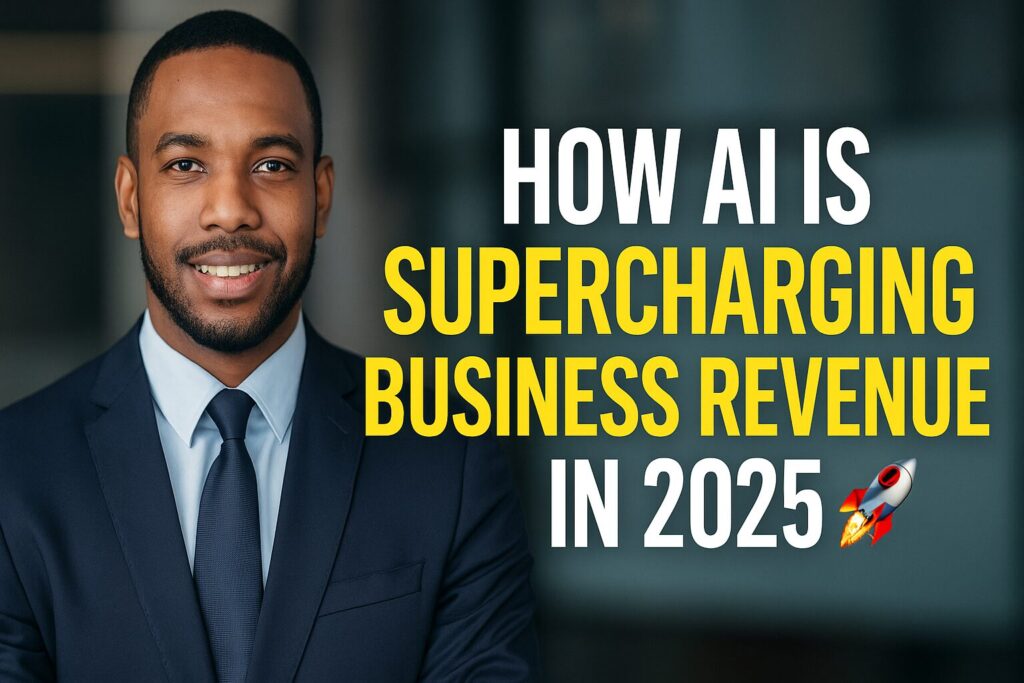The AI Revenue Revolution: How Artificial Intelligence is Transforming Business Growth
Unpacking the paradigm shift—real-world strategies, benefits, and challenges as AI reshapes the bottom line.
Introduction: Welcome to the Era of AI-Driven Revenue

Artificial Intelligence (AI) is no longer just a futuristic buzzword. In today’s hyper-competitive business landscape, AI is setting off a seismic shift, deeply changing how companies make money, streamline operations, and foster customer loyalty. If you’re a business leader, marketer, or even just AI-curious, understanding how AI is rewriting the rules of revenue growth is now essential. Let’s dive into the core themes covered in the “Grow with Technology” podcast’s recent deep dive on this topic.
The Paradigm Shift: Why AI Isn’t Just Another Tech Upgrade
AI’s fundamental difference lies in its capacity to consume and analyze massive data volumes at unprecedented speed and accuracy. Before, data-driven insights were limited by human constraints and traditional software. Now, companies can spot new markets, fine-tune pricing in real time, and optimize complex supply chains—all on a scale that was previously unimaginable.
This is what hosts Ben Bard and Jane Doe refer to as a “paradigm shift.” AI is not about gradual improvement, but genuine transformation. It turns business intuition into data-backed strategy, helping leaders identify growth opportunities and minimize costly mistakes, faster than ever before.
Predictive Power and Personalization: The Engines of Revenue
A standout component of AI is its predictive capability. Think about a retailer leveraging AI to forecast product demand—not just for the upcoming season, but down to local events or micro-trends in specific cities. That means fewer stockouts (lost sales) and less excess inventory (money tied up in unsold products).
But AI’s influence extends well beyond inventory. Through advanced analytics, businesses can move from broad segmentation to hyper-personalized marketing. By mining browsing habits, past purchases, and app interactions, AI enables tailored offers and recommendations that elevate customer engagement and loyalty. Long-term relationships translate into increased customer lifetime value and recurring revenue.
The Tech Stack: Machine Learning, NLP, and Computer Vision
AI’s business magic is powered by several technologies:
- Machine Learning (ML): The heart of pattern recognition and prediction, ML powers recommendation engines, fraud detection, and forecasting models.
- Natural Language Processing (NLP): Not just for chatbots—NLP scours customer reviews, social media, and feedback to reveal emerging trends or hidden pain points. This analysis helps businesses develop new offerings and refine messaging that resonates.
- Computer Vision: From identifying stock levels in retail to spotting defects on production lines, computer vision automates visual tasks, reduces errors, and drives operational efficiency.
Real-World Successes: Netflix, Amazon, JPMorgan Chase
AI’s impact isn’t abstract. Netflix’s sophisticated recommendation system increases user engagement and retention by making viewers feel uniquely understood—fueling strong subscriber growth. Amazon’s AI-predictive supply chain ensures shelves are stocked and deliveries happen faster, while also powering those “just for you” product nudges.
In finance, JPMorgan Chase’s use of AI automates the analysis of legal documents, detects fraud, and enhances customer service with virtual assistants—cutting costs and managing risk with precision.
The Payoff: Decision Quality, Efficiency, and Customer Loyalty
The tangible benefits of AI adoption are huge:
- Enhanced Decision-Making: Deeper insight leads to smarter marketing, pricing, and product development.
- Operational Efficiency: AI-driven automation—beyond customer service bots into robotics and manufacturing—improves throughput, reduces errors, and saves cash.
- Superior Customer Experience: Personalized interactions generate higher conversion rates, repeat business, and brand advocates.
Roadblocks to Adoption: Investment, Skills, and Trust
Yet, integrating AI comes with hurdles—significant upfront investment, a global scarcity of AI talent, and mounting demands for data privacy and transparent practices. Businesses must balance aggressive innovation with thoughtful strategy and ethical stewardship.
Measuring Success: Metrics that Matter
It’s not enough to “hope” AI drives results. Success is measured by hard ROI (sales gains, cost savings), customer lifetime value, improved retention rates, and operational metrics like labor hours saved and error reduction.
On the Horizon: Scaling Personalization and IoT Synergy
Emerging trends point to vastly scaled personalization (think dynamically customized content for millions) and the powerful marriage of AI with IoT data—optimizing everything from manufacturing uptime to smarter traffic flows. FinTech, too, is set for massive disruption as AI democratizes investment advice and expands lending markets.
Conclusion: Make AI a Strategic Imperative
AI isn’t optional. For businesses aiming to lead, the challenge is crafting a clear strategy, starting small with pilot projects, investing in data infrastructure, and fostering cross-functional collaboration. As AI continues to evolve, those who leverage it boldly—and wisely—will define the new standard for profitable growth.
Ready to take the first step? Explore a single area of your business this week where AI could solve a specific challenge, and set yourself on the path to smarter, AI-powered growth.
